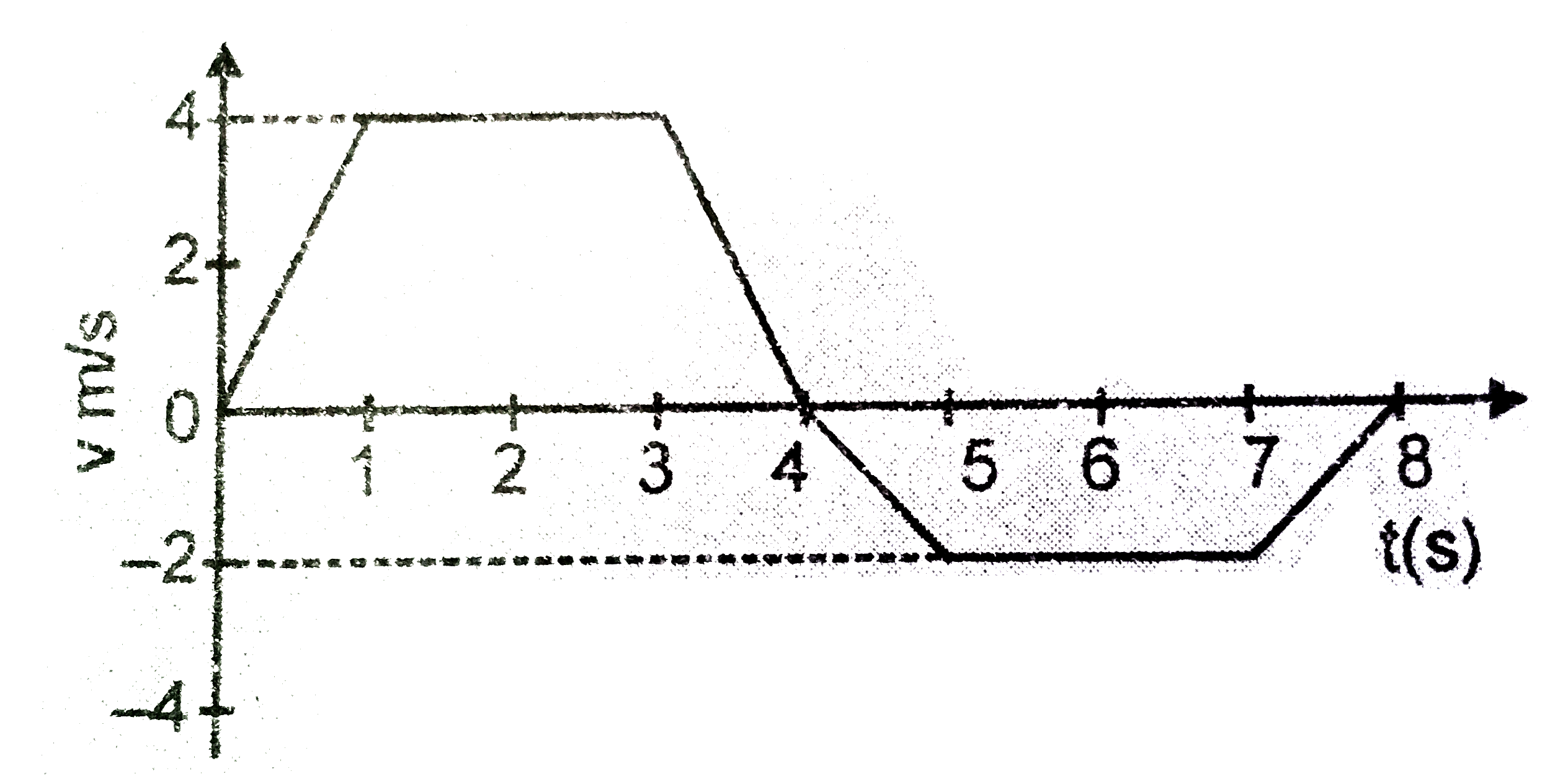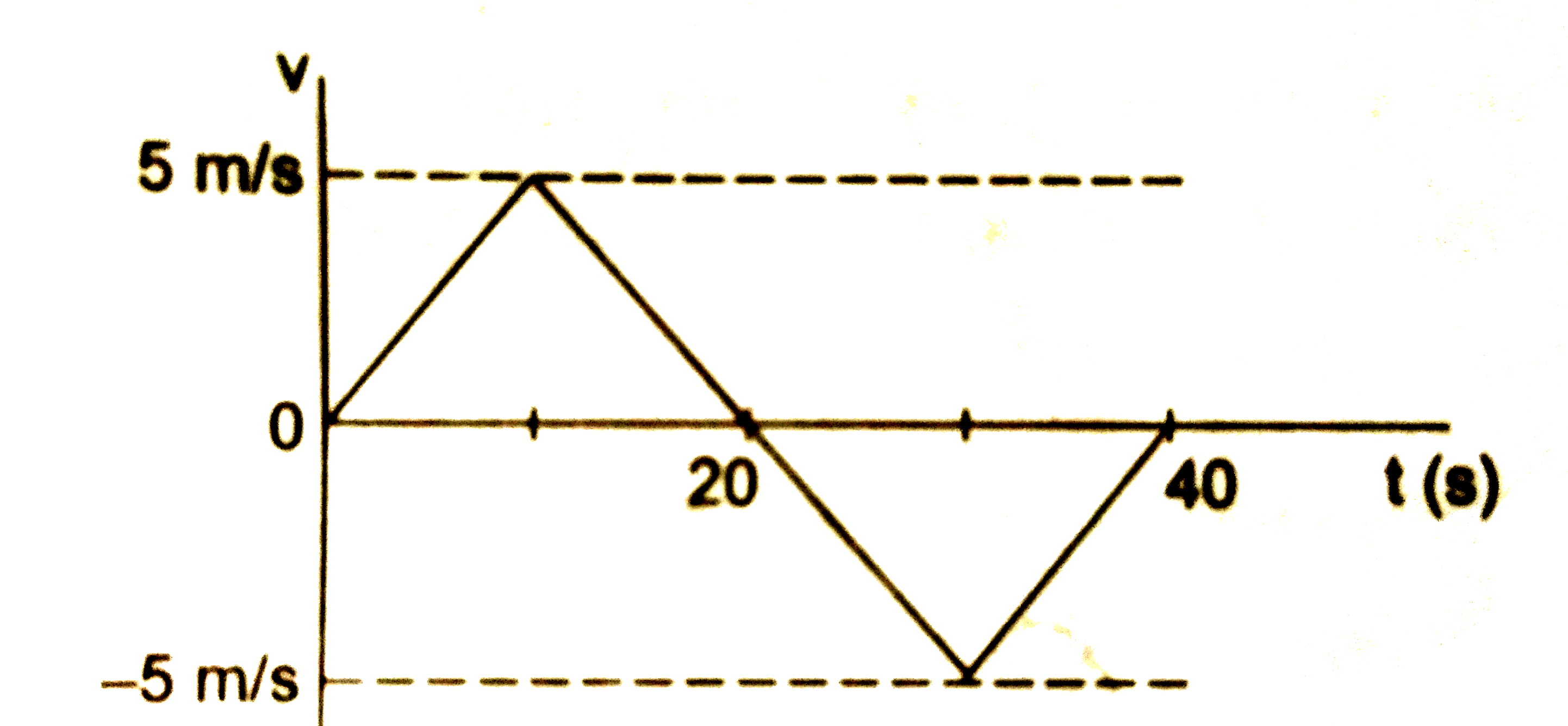A particle moves in a straight line from origin. Its velocity time curve is shown. Find the distance of particle at the =8sec. From the origin and the distance travelled by the particle during first 8 seconds.
 Solution in Gujrati
Solution in Gujrati
The correct Answer is:B
Time taken =dvy=dv
Topper's Solved these Questions
- MOTION IN A PALNEBook:ALLEN Chapter:MOTION IN A PALNEExercise:EXERCISE-02
Explore 37 Videos
- MOTION IN A PALNEBook:ALLEN Chapter:MOTION IN A PALNEExercise:EXERCISE-03
Explore 6 Videos
- KINEMATICS-2DBook:ALLEN Chapter:KINEMATICS-2DExercise:Exercise (O-2)
Explore 47 Videos
- NEWTON'S LAWS OF MOTION & FRICTIONBook:ALLEN Chapter:NEWTON'S LAWS OF MOTION & FRICTIONExercise:EXERCISE (JA)
Explore 4 Videos
Similar Questions
The distance x of a particle moving in one dimensions, under the action of a constant force is related to time t by the equation, t=√x+3, where x is in metres and t in seconds. Find the displacement of the particle when its velocity is zero.
View SolutionA point traversed half the distance with a velocity v0. The remaining part of the distance was covered with velocity v1 for half the time, and with velocity v2 for the other half of the time. Find the mean velocity of the point averaged over the whole time of the motion.
View SolutionA particle is moving in xy-plane .At certain instant the components of its velocity and acceleration are as follows ux=3m/s,uy=4m/s,ax=2m/s2anday=1m/s2. The rate of change of speed at this moment is
View SolutionA piece of wire is bent in the shape of a parabola y=kx2 (y-axis vertical) with a bead of mass m on it. The bead can slide on the wire without friction. It stays at the lowest point of the parabola when the wire is at rest. The wire is now accelerated parallel to the x-axis with a constant acceleration a. The distance of the new equilibrium position of the bead, where the bead can stay at rest with respect to the wire, from the y-axis is:
View SolutionFrom the velocity time plot shown in figure find the distance travelled by the particle dureing the first 40 seconds. Also find the average velocity during this period.

View SolutionThe velocity-time graph of a particle in straight line motion is veloity-time graph of a particle in straight line motion is shown in. The particle starts its motion from origin. . The distance of the particle from the origin after 8 s is .
View Solutionएक सरल रेखा पर चलते एक कण वेग - समय ग्राफ चित्र में दिखाया गया है | प्रथम 40 s में कण द्वारा चली दुरी निकालें | इस अवधि में कण का औसत वेग भी निकालें |

View SolutionA particle starts from the origin and moves along a straight line. If the velocity of the particle at time t seconds be 10t cm/s, find the distance traversed during first 4 seconds after the start.
View SolutionA particle starts from rest and moves along a straight line with uniform acceleration. The ratio of distance travelled by the particle during the first three seconds to the distance travelled by the particle during the next three seconds is 3 о 2
View Solutionसरल रेखा में गतिमान एक कण का वेग समय ग्राफ नीचे दिया गया है। पहले चार सेकंड में कण द्वारा तय दुरी की गणना कीजिए ।

View SolutionA particle moves in a straight line and its velocity v at time t seconds is given by v=(6t2−2t+3) cm/sec. Find the distance travelled by the particle during the first 5 second after the start.
View SolutionA particle starts from rest and moves along a straight line with uniform acceleration. The ratio of distance travelled by the particle during the first three seconds to the distance travelled by the particle during the next three seconds is 3 о 2
View SolutionThe variation of velocity of particle moving along a straight line is shown in the figure. The distance travelled by the particle in 4th second is?
View SolutionThe variation of velocity of particle moving along a straight line is shown in the figure. The distance travelled by the particle in 4th second is
View Solutionসরলরেখায় গতিশীল একটি কণা মূলবিন্দু থেকে আরম্ভ করে যদি t সেকেন্ড সময়ে তার বেগ 10t সেমি/সেকেন্ড হয়, তবে প্রথম 4 সেকেন্ড সময়ে অতিক্রান্ত দূরত্ব নির্ণয় করো।
View SolutionThe acceleration of a particle increasing linearly with timer is be. The particle starts from the origin with an initial velocity, The distance travelled by the particle in time will be
View Solution